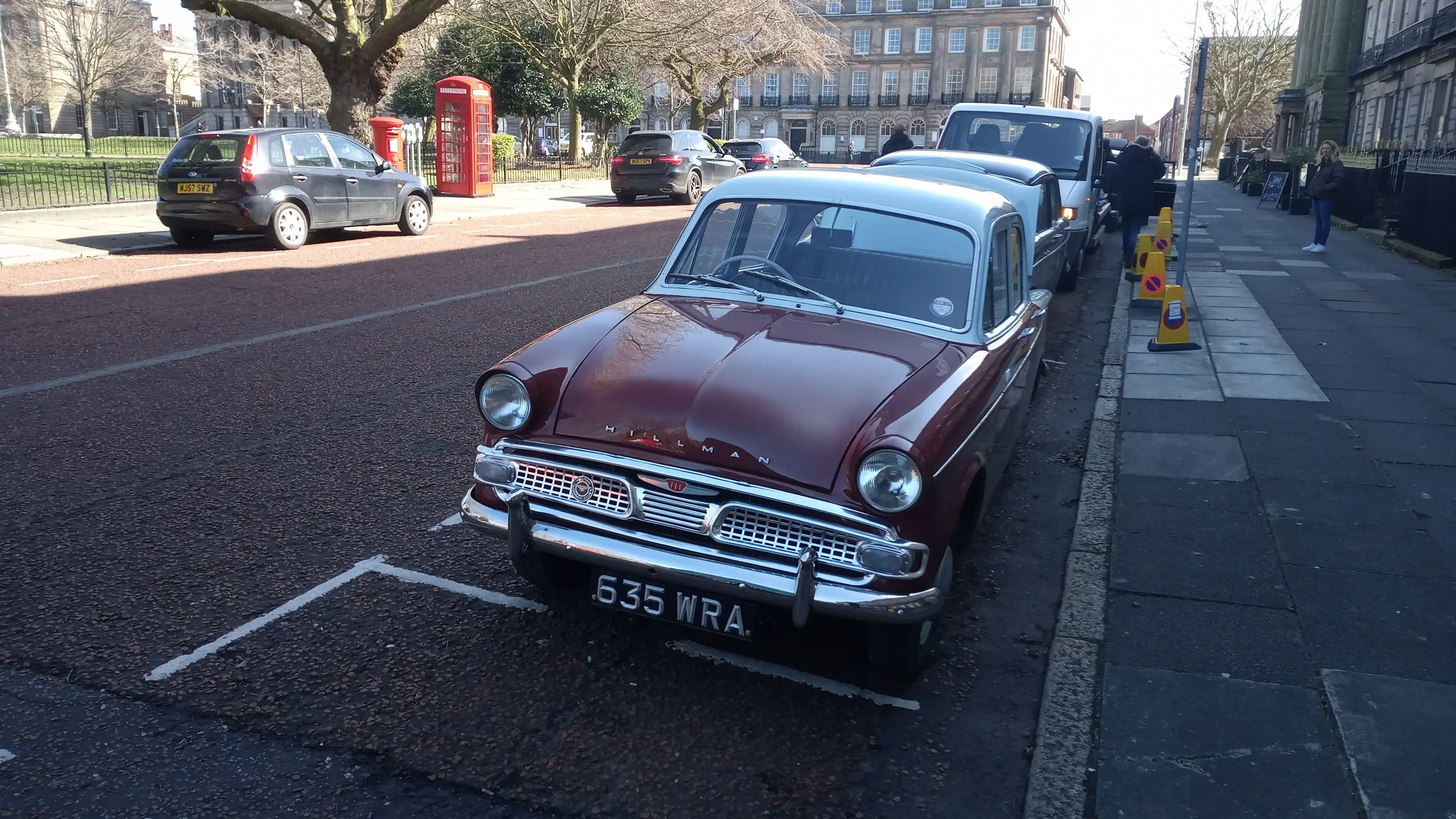MEET THE OWNER – THE HIRST FAMILY HILLMAN MINX SERIES IIIC
24 August 2022
One of the many joys of watching films and television re-runs on Talking Pictures TV is the opportunity to marvel at the vehicles in the background. During the Macmillan era, it appeared to be an unofficial rule that every fourth car had to be a Standard Ten, every third car had to be a Ford Anglia 100E and virtually every second car had to be an ‘Audax’ Minx. As a result, Hillmans such as the Hirsts’ 1962 Series IIIC might be driven by the hero of a low-budget crime film; the Rootes Group were masters of cinematic product placement. Alternatively, you could catch a glimpse of one parked between a Morris JB van and an E-Series Vauxhall Wyvern somewhere near Merton Park Studios. Let us not forget the 1960 Series IIIA that played a crucial role in The Beatles Help! film.
The various permutations of the Audax range are prone to confuse, but, put simply, the 1955 Sunbeam Rapier founded the dynasty. The ‘New Minx’ followed in the spring of 1956, and by the end of the year, the Gazelle after Rootes, acquired Motors Singer. The Hillman was the cornerstone of the family, receiving almost annual facelifts; the Series II appeared in 1957, while the 1958 Series III gained a new grill. Next, 1959 marked the Series IIIa with a floor gear lever on the De Luxe models, and the 1960 Series IIIB had new tail fins to emphasise “the sleek smooth flowing body lines”. Finally, the Series IIIC made its bow in July 1961 and was known as the ‘Minx 1600’, thanks to its 1,592cc engine. According to the company’s ever-modest publicity material, this was “the finest car in its class!”.

Such regular alterations meant dealers could promote the latest Minx to buyers who might otherwise have considered the Austin A55 Cambridge Mk. II, Ford Consul Mk. II, Morris Oxford Series V or Vauxhall Victor F-Type. Autocar believed the Series IIIC was “an essentially sound and practical car” that was “substantial, hardwearing and a quite lively performer.” No reasonably minded motorist could demand more for their £702 5s 3d, while a tempting array of accessories would make your Hillman even more appealing. A heater was another £12 15s (or £17 10s if you also wanted a fan), windscreen washers £1 15s and while a radio was as much as £26 1s 5d, it would allow you to listen to the BBC Light Programme between appointments. Meanwhile, all fashion-conscious Minx drivers naturally invested £21 3s 1d in whitewall tyres and a duotone paint finish.
Sixty years later, the Hirst Series IIIC is a reminder of a time when families really would convoy several children on the front bench seat (a practice that has mercifully vanished) and when extra chrome denoted an upmarket version. Rootes also made an entry-level Special that was Spartan that “finished in high gloss baked enamel” was listed as a sales feature. As for performance, a top speed of 80 mph was more than sufficient for trunk road motoring, while a fresh vent in the driver’s footwell provides 1962-style air conditioning. And by today’s standards, the Hillman seems diminutive; Rootes promoted it as a medium-sized saloon, but at just 13 feet 6 inches in length, it is shorter than a 2022 Mini Clubman.
We will cover the story of the Minx’s restoration – but for now, here is a photograph of the car “with a style of its own” in its prime.
With Thanks To – Kevin Hirst
